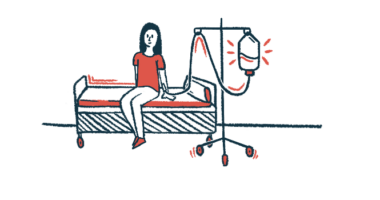Off-label tocilizumab works better when taken after 1st attack: Study
Therapy not as effective if delayed until after other meds fail to control NMOSD

Starting off-label treatment with tocilizumab after the first disease attack in neuromyelitis optica spectrum disorder (NMOSD) is more effective at reducing disability than switching to tocilizumab after other therapies fail to control the disease, a study shows.
Still, the risk of relapse over three years remained the same regardless of when tocilizumab treatment was started.
“These findings emphasize the importance of early initiation of regular, high-efficiency therapies like tocilizumab following the first disease attack,” researchers wrote. “This approach can lead to significant reductions in residual disability and better preservation of neurological function, as opposed to delaying treatment until relapses occur.”
The study, “Early versus escalation treatment of tocilizumab in neuromyelitis optica spectrum disorder: a retrospective study,” was published in Neurological Sciences.
NMOSD is a rare autoimmune disease marked by inflammation and damage to the spinal cord and optic nerve, which sends and receives signals between the brain and the eye.
Repeated relapses can result in cumulative disability
The condition is typically characterized by episodes of sudden symptom worsening, called relapses, followed by remission periods in which they lessen. Over time, repeated relapses can result in cumulative disability.
Current NMOSD treatment options can help manage symptoms and prevent relapses, usually by suppressing the immune system.
Sometimes used off-label for NMOSD, tocilizumab (sold as Actemra and RoActemra, with biosimilars available) is a medication approved for some autoimmune disorders, such as rheumatoid arthritis. Previous studies have supported its potential to safely and effectively reduce disability and relapse risk in people diagnosed with NMOSD.
However, whether tocilizumab should be given after the first attack or delayed until other disease-modifying therapies have been tried first remains unclear.
To address this, a research team in China retrospectively examined the medical records of 41 NMOSD patients who received regular tocilizumab treatment between June 2016 and April 2020 at a hospital in China.
Fourteen patients started on tocilizumab after their first attack (early treatment group), while 27 patients began tocilizumab treatment after other immunosuppressants failed to control their disease or after experiencing at least two relapses while on those other medications (delayed treatment group).
Other first-line medications included corticosteroids, azathioprine, mycophenolate mofetil (sold as CellCept), tacrolimus, and rituximab (sold as Rituxan and others, with biosimilars available). None are specifically approved for NMOSD, except for rituximab in Japan.
Tocilizumab was administered at 8 mg/kg of body weight as an under-the-skin injection at four-week intervals. NMOSD severity was assessed using the Expanded Disability Status Scale (EDSS) at the start of tocilizumab treatment (baseline) and routinely during follow-up. Higher EDSS scores indicate worse disability.
Early treatment group experienced significant reduction in disability scores
Results showed that patients in the early treatment group experienced a significant reduction in median EDSS scores, reflecting less disability, after three and six months of tocilizumab treatment compared with baseline. No changes in EDSS scores were seen between six and 12 months in these patients.
In the delayed treatment group, median EDSS scores dropped significantly only after six months of treatment and remained steady at 12 months.
When the two groups were compared, the early tocilizumab treatment group had significantly lower EDSS scores at three, six, and 12 months relative to the delayed treatment group. Still, a statistical analysis of three years of data suggested the risk of relapse was not significantly different between the two groups.
About half (56.3%) of the 16 patients who spontaneously stopped tocilizumab treatment experienced a relapse at a median of four months after the last dose.
A total of 11 patients were switched from tocilizumab to a low dose of rituximab due to relapse or financial burden. In these patients, the annualized relapse rates were comparable with tocilizumab versus rituximab.
“Our study showed that NMOSD patients benefit from tocilizumab treatment initiated at the first attack, and should be followed by regular infusions,” the researchers concluded. “Switching from tocilizumab to a low-dose rituximab regimen is safe and feasible.”








